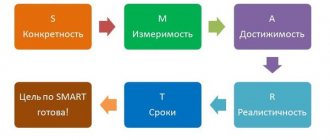The Franklin Pyramid is one of the most famous time management techniques, used to a greater or lesser extent by many successful business coaches. However, it should not be considered only as a time management technique; it is a whole system that includes setting goals and achieving them, designed to last a lifetime.
Benjamin Franklin
Benjamin Franklin (1706-1790) - politician, diplomat, scientist, inventor, journalist, businessman, one of the Founding Fathers of the United States and the authors of the Constitution. The first American to become a foreign member of the Russian Academy of Sciences. He was a very influential politician, despite the fact that he was never president of the United States. His biographer even joked about this once: “Benjamin Franklin is the only president of the United States of America who has never been one.” Franklin's portrait has been seen by everyone who has ever held a $100 bill in their hands. He is the author of the now catchphrase: “Time is money.”
Ben Franklin was sure that control over the events of our lives brings peace of mind to a person. He studied all his life and paid a lot of attention to self-development and education. His activities required a lot of time and the answer to this need was a self-developed system that he followed throughout his life. He wrote it at the age of 20 and since then has tirelessly followed its principles, despite the circumstances that arise.
How effective is Franklin's pyramid? We can judge this by at least the example of his life. The 15th of 17 children in the family, the son of an ordinary soap maker, who graduated from several classes of a rural school and worked from the age of 10, B. Franklin, thanks to his hard work, achieved recognition in several fields simultaneously and forever inscribed his name in the history of mankind. Dale Carnegie once said, “If you want excellent advice on how to deal with people, manage yourself, and improve your personal qualities, read the autobiography of Benjamin Franklin—one of life's most fascinating stories.”
Franklin's Pyramid. Fans of various statistical studies in the West have found that only 1% of people can say exactly what they want to achieve in life.
B. Franklin knew this for sure - he was distinguished by his efficiency and determination. Even in his youth, he made a plan and tried to carry it out. The essence was the following: the global task was divided into smaller ones, and those, in turn, into subtasks. This is Franklin's pyramid idea.
How to use?
After studying each point, perhaps someone considered this pyramid of achievements too complex and confusing. Don’t be scared; once you start using it, you will get used to it over time and begin to better understand the intricacies of this system.
For example, having figured out what exactly you want to achieve, every morning or evening, whichever is more convenient, sit down to fill out your diary. That is, prescribe even the smallest tasks for the day.
It is important to maintain discipline and pay attention to each point, reviewing them periodically. Because some dreams may lose relevance. And it would be useful to replan your activities in order to realize your needs, and not, on the contrary, create frustration for them.
In the West, this Franklin system is so popular that diaries are available for sale, with pages lined up directly for each stage. Although, it is quite possible to draw a notebook yourself. To make it easier to navigate exactly how to do this, you can read the article on how to set goals correctly. It is located at this link.
Life values
Life values are the foundation on which everyone builds their life. Their belonging to the spiritual leads to the fact that in the modern world many people do not pay due attention to the identification of values. Material things prevail, everyone wants to earn a lot of money, drive expensive cars, but cannot give a complete answer to the question of exactly how much money they need. This attitude is not bad, but rather wrong. Be honest with yourself. Security and money are normal values; if it brings you satisfaction, then why not dedicate your life to it? For this, you may have to sacrifice other values, so it is important to be confident in your choice. And this applies not only to the above example, but also to other meanings of life - the desire to benefit people, to have power, to be famous, to devote oneself to family. You can choose several areas, the main thing is that it should be what you really want to do and what you are ready to devote your life to, something that will make you happy and help you realize yourself.
B. Franklin describes his life values and plan for achieving them in his autobiography. For him, values were those simple truths that he learned from Quakers in his youth. Based on their cultivation, he built his career and always tried to adhere to the proclaimed principles (according to his contemporaries, this did not always work out with order):
Abstinence.
Do not eat to the point of satiety, do not drink to the point of intoxication.
Silence.
Say only what will benefit me or other people, avoid empty talk.
Order.
Every thing has its place, and every business has its time.
Determination.
Decide to do what needs to be done; strictly carry out what is decided.
Thrift.
Spend money only on things that benefit me or others; don't waste anything.
Hard work.
Don't waste time; be always busy with something useful, avoid unnecessary actions.
Sincerity.
Do not use harmful deception; think honestly and fairly, adhere to the same rule in conversation.
Justice.
Do not harm anyone; do not act unjustly and do not avoid doing good deeds.
Moderation.
Avoid extremes; tolerate insults.
Purity.
Maintain bodily cleanliness, neatness in clothing and home.
Calm.
Don't worry about trifles or ordinary or unavoidable events.
Chastity.
Be chaste in thoughts, control your instincts.
Modesty.
Imitate Jesus and Socrates.
These values are more abstract than the power or fame exemplified by modern practitioners of the Franklin Pyramid technique. But that's not the main thing. The main thing is that they do not run counter to the global goal. If a person is vain and ambitious, he will not be able to work for a team result for long. Or he can, but he won’t be happy. Therefore, we repeat once again - define your values carefully and carefully.
Now how can this be applied in practice?
- how it is used against you;
- how you can apply it yourself;
- and the high art of asking for help.
1
Caution - danger!. Maybe you've already heard about the Frankin effect, maybe you've seen it in your life
But there are people who have eaten the dog at it, and use it mercilessly left and right
Maybe you've already heard about the Frankin effect, maybe you've encountered it in life. But there are people who have eaten the dog at it, and use it mercilessly left and right.
It is widely used in sales to create an atmosphere of mutual understanding with the client. Instead of offering to help the prospect, the salesperson can simply ask for help. The customer is asked what exactly he likes about the product, or what product he might like in the future, etc. The client provides this service and begins to have a better attitude towards this product, which means he is more likely to want to buy it, etc. In general, I don’t mind when they sell me something good and do it in a fiery and skillful way. But still, manipulation remains manipulation. So be aware - and be vigilant.
I molded him from what was there - and then I fell in love with what was there.
Now an example of how this effect affects you in everyday life.
You helped someone - maybe not a very good person. They fell under the spell of this effect, and began to believe that the person was quite good. Moreover, the more you help, the better you begin to treat him.
In general, helping others is a good thing. But remember, your relationship may not be mutual. It may turn out that you treat him better than he treats you. And then you will be surprised that the one you helped suddenly did something bad to you and turned out to be a radish.
You begin to feel better about the person you helped. But the person you helped may treat you much worse. This can play a cruel joke on you. Remember how with the goldfish? She helped and began to treat her comrades with the trough much better. But grandma turned out to be ungrateful and maliciously abused her trust. This is how the dark side of the Franklin effect manifests itself.
The fine art of asking for help.
And now - how can you apply the Franklin effect for yourself personally?
To improve relationships with colleagues, relatives, friends, or just strangers. Don't be shy to ask for help so that people will treat you better. Benjamin Franklin guarantees, and scientists confirm.
How exactly should you ask for a favor?
Study information about the person whose favor you want to achieve. Determine his area of interest. Find the service that will give him the opportunity to show his best side. But it will not require excessive efforts from him.
Do the necessary preparatory work. Show your interest. Demonstrate your adequacy. And then ask politely for it. Some of those to whom you make a request will refuse you. However, many will agree to do it. And they will treat you better.
Global goal
The global goal is the next block of Franklin's pyramid. It is located and maintained on the basis of previously determined life values and represents the maximum desired result, the goal of all life. If the first stage is the meaning, which manifests itself in the answer to the question: why do I live? then the global goal should provide an understanding of when this meaning will be achieved.
Let's explain with an example. For a professional football player who has chosen the meaning of life to realize himself in the sports field and achieve worldwide fame and legendary fame, the global goal is victory in the Champions League and the World Cup. For a person who wants to acquire power as a politician, the global goal will be to win the presidential election or be appointed prime minister.
Z.Y.
About my magazine
Unfortunately, the blog turns into different experiences from life than stories about the life of my magazine. But I will be glad if you go there and look, maybe many of the articles will be useful to you. I often read books by successful people and try to publish similar articles there.
Now I’m re-studying courses on SEO and in the near future I will try to write to you about website promotion, fortunately I have free time for this.
Problems with spark
I noticed that I can’t format it properly here. I click on “fat” and nothing happens. Is it just me or does it happen to everyone?
General plan
A master plan is a step-by-step instruction, a plan for how a global goal will be achieved. At this stage of Franklin's pyramid, it is large and generalized. In the case of a football player, in order to get into a strong team and be called up to the national team, he needs to achieve success first with the youth team. For example, winning a trophy in the second league, passing the qualifying round, etc. On the way to becoming president or prime minister, you need to gain the necessary experience in management, administration - graduate from a specialized university, be elected mayor, governor, deputy, lead a party.
Time Management Tips Based on Franklin's Pyramid
Review your plans from time to time and adjust them. Take into account emerging circumstances and changes that are beyond your control.
- The daily plan can be changed during the day - it happens that you have not correctly calculated the time to complete a task, or have mistakenly determined the priority.
- Adjust the short-term plan once every 4-6 weeks.
- The long-term plan of the Franklin pyramid can be adjusted once every 6 months.
- General - no more than once a year.
The global goal can also change over time, because goals and desires do not always remain the same after 10 years. With age, life values can also change. If this happens, then all steps of Franklin’s pyramid need to be adjusted.
No matter how overwhelming it may seem to you to plan your life many years in advance, it must be done. If only because in this case you will be in charge of your own life. It has long been a known fact: those who do not plan their lives fulfill other people’s dreams and goals, devoting their time and energy to it. The Franklin Pyramid is a great and effective way to take control of your life.
Long term plan
Long-term plan - planning the next 3-5 years to achieve specific goals. It must correspond to one of the points of the master plan, thus bringing the global goal closer. For an aspiring politician who wants to become a prime minister, it is important to obtain the necessary higher education, such as in government or political science. A good university will give you both knowledge and meeting the right people. For a football player, the long-term plan may be to move to the academy of a more famous coach with the goal of progressing under his guidance and winning youth competitions, followed by signing a contract with a professional club.
Regularity of tasks
Thus, having gone through all six stages of forming a time management system according to Franklin’s method, you have received an action plan based on the main goals of your life and designed to achieve them. But, despite the thoroughness of the work done, from time to time you need to review your system to check whether it continues to correspond to your values, whether your goals have changed in the process of achieving them. Each level of the system should be re-analyzed at certain intervals. So, it is enough to return to the master plan once a year, long-term plans should be reviewed several times a year, and short-term plans should be analyzed every one to two weeks.
To add a plan revision task to the LeaderTask organizer, you need to refer to the task frequency setting, which is done in the deadline setting dialog box.
Based on numerous parameters for creating recurring tasks, you can not only create a reminder to review plans, but also add current regular tasks to the plan that require a certain frequency of execution. If you have set a goal for yourself to always be in good physical shape, then you can achieve this through sports, for example, going to the pool. For such training to produce results, it must be constant and regular, and here the creation of a periodic task with a certain cyclicity is the best fit.
Plan for the day (week)
Top of Franklin's Pyramid. On our website we published a lesson on how to properly plan for the day. In the case of a pyramid, a daily plan is the smallest unit in achieving a global goal, which brings one step closer to it. In the context of the selected examples, this could be training kicks with both feet, from different distances and different areas of the field for a football player. For a politician, this is, for example, reading “The Prince” by N. Machiavelli before an exam on the theory of state and law.
For many, Franklin's pyramid will seem like an overwhelming task, since it requires planning for virtually an entire life. It's impossible, it's boring, it kills surprise. But that's not true. We all pursue some goal in our lives, and no one limits us in our choice of means. Franklin's pyramid is, in fact, just a more specific idea of achieving this goal.
Do you want to learn how to use the Franklin Pyramid and other time management tools to effectively plan and manage your time? Take the course
"The best time management techniques"!
Practical use of the Franklin pyramid
Many people will find it a daunting task to accomplish all the points on Franklin's pyramid of goals. However, once you start, everything will turn out to be much simpler than it seemed at first. Focus on the top of the pyramid - your plan for the day. In the evening, make a plan for the next day, or in the morning, make a plan for today.
In order for the plan to be completed by the evening, you should do the most important things first, and only then the secondary ones. And only if you have time to complete these tasks, you can do minor ones.
Of course, if you have never planned your actions before this point, living according to Franklin's pyramid plan will not be easy at first. The habit of procrastination or being distracted by something unimportant from time to time will prevent you from completing planned tasks. However, be persistent, and over time you will develop the necessary discipline.
Reviews and comments
Did you like the article? Want to discuss the validity of Franklin's pyramid? Do you have experience using it and would you like to share it? Leave a comment below.
We also recommend reading:
- Storytelling
- 10 Productivity Lessons from Benjamin Franklin
- Time management specialists
- Benjamin Franklin effect
- Simple Time Management Tools: A Brief Overview
- Habits to develop over the next year
- Pyramid of Minto. Principles
- Basics of Strategic Life Planning
- List of books that inspire and force 4brain readers to act
- Using Maslow's pyramid for self-actualization
- Training by Tony Robbins. Day 5: Your Standards of Behavior: Be Impeccable
Key words:1Time management
How it works Science explains
It seems to us that if people like us, they will provide us with services.
However, the Benjamin Franklin effect and subsequent research show that this is not the case with strangers. Such people begin to feel sympathy for us only when they themselves do us some kind of favor.
After that, they are ready to provide us with other services. If you need to win someone over, ask that person for a favor. If we do someone a favor, we begin to believe that we feel sympathy for that person. This sympathy leads to another favor, etc.
A compelling experiment—tough but effective. Ecker and Landy, 1969
A group of volunteers were offered to take a test and earn some money.
During testing, the experimenter behaved very rudely and lashed out almost as much as he could. By the end, all the subjects practically hated him with all their hearts. After that, all the subjects were given money and divided into three groups.
- The experimenter personally asked one third of the subjects to return the money, saying that he financed the experiment from personal funds. Nobody could refuse him.
- the second third was detained by the presenter's assistant and asked to donate money “for the good of science.”
- the remaining third quietly left along with the money.
As you already understood, the point of the experiment was not at all in the test. And in how the participants will relate to the experimenter.
They were asked to rate it on a 12-point scale. So what do you think?
- the third who had to give money to the assistant gave the least score - 4 and a half points.
- those who took the money and left gave 5.8 points.
- but those who gave their money to the experimenter personally rated him 7.2 points. Despite the rudeness and the money taken away!
What do we see? Requesting a refund through an assistant has reduced sympathy. But a personal request directly increased the rating!
This experiment confirmed that the Franklin effect certainly exists.
But why? How to explain this?
If you have done a favor for an unpleasant person, you experience cognitive dissonance. “I helped him - but he’s bad! What is wrong with me?"
The brain begins to look for an explanation to get rid of this internal conflict. And he finds: “I didn’t help him just like that. I did it because I liked him."
That is, your behavior affects your attitudes. A person wants to justify his actions, incl. in front of yourself. If we do someone a favor, we begin to believe that we feel sympathy for that person. This sympathy leads to another favor and so on.
One of our beliefs (not always true) says: “We do good to those we like and bad to those we hate.” The Franklin effect suggests looking at it a little differently:
We feel indebted to the people who gave us a gift. So much so that sometimes they are ready to sacrifice real money or their invaluable time in order to thank even a complete stranger for completely insignificant signs of attention.
Alexander Levitas
| If you haven’t read my new bestsellers “Convinced, I’ll take it!” , “Money for a barrel!” and “Even more money from your business” - it’s time to do it. After all, in business, only marketing and sales bring profit, and books are dedicated to them. More than 500 waiting for you, as well as hundreds of examples of their use in Russia and abroad. These techniques have already brought hundreds of millions to my students and clients. Let's check how much money they will bring you " |
Do you always manage to do everything you planned? Or does it sometimes seem to you that there is absolutely not enough time, and you feel under time pressure? Time passes, flows away, is spent on nonsense, but important things remain undone? If this is the case, the diagnosis is clear - you are ineffectively organizing your personal time.
Do you want to know how the famous scientist, inventor, writer, philosopher and politician Benjamin Franklin managed his time? Yes, yes, the same Franklin who smiles at you from a hundred dollar bill. How did he manage to combine all these activities? They say that he was desperately short of time, and then he came up with a special system for organizing his personal time, which allowed him to get more done.
If you adopt this system and apply this system day after day, you will be able to avoid wasting time, you will get more done, you will be able to structure your life and finally achieve those goals that you have long dreamed of. And Franklin will smile at you with a green smile more often.
Don't believe me? Think it's too good to be true? And you check...
Benjamin Franklin (1706-1790) - famous American scientist, inventor, writer, philosopher and statesman, a kind of American Lomonosov. The fifteenth child in a poor family, Ben Franklin became one of the most educated and famous people of his time thanks to his insatiable thirst for knowledge and work on himself. He independently mastered several professions, studied French, Spanish, Italian, and Latin. For 20 years, Franklin published the Pennsylvania Gazette and for almost 30 years, the literary magazine Poor Richard's Almanac. He opened the first public library in the United States, created the American Philosophical Society and founded the University of Pennsylvania. Having become interested in physics, Franklin independently went from a complete layman to a world-famous scientist, made the most important discoveries in the field of electricity and created the theory of shipbuilding. To this day, Franklin's inventions such as the lightning rod, electric fuse, bifocal glasses, daylight saving time, etc. are widely used. In addition, Franklin is one of the most prominent political figures in America. He was one of the authors of the US Declaration of Independence and it bears his signature. During the years of America's struggle for independence, Franklin was envoy to Europe and concluded an alliance treaty with France, and then a peace treaty with England. And this is far from a complete list of what this amazing man became famous for.
How did he manage to do all these things at once? They say that he was faced with an acute shortage of time, and then he invented a time management system that allowed him to act several times more efficiently than an ordinary person. As part of this course, I will try to briefly outline the essence of his system so that you can use it to manage your personal time.
The timekeeping systems that are taught in many time management courses are “backwards-oriented” - they are based on recording the time already used, worked, this is a kind of diary of what has been done. Franklin's system is "forward-oriented" - it works with what needs to be done. The global task is divided into subtasks, which are divided into even smaller subtasks. Visually, this system can be displayed in the form of a stepped pyramid, and the process of its application can be represented as the process of building this pyramid.
1)
First, the massive base of the pyramid is laid, which serves as a support for all other floors.
| Plan for the day |
A person determines his life values (roughly speaking, what he wants from life). For one, this means material wealth and confidence in the future. For another - a prosperous family, a loving wife and happy children. For the third - fame and high social status. For the fourth - power. For the fifth - knowledge. For the sixth - service in the name of humanity...
The list can be continued indefinitely, especially since a person usually has a certain set of life values. The stage of determining life values is the most important in building a pyramid - if a mistake is made at this stage (for example, a person chooses “knowledge” and “serving people,” although in fact, what is primarily important to him is “fame” and “high social status” "), then he will inevitably be disappointed later.
So, the first thing you need to do is make a list of life values, and you shouldn’t be afraid to spend too much time on it - it’s important to think about the list well. It is necessary to ensure that the chosen values do not contradict each other.
2)
The next stage is the construction of the second floor of the pyramid, resting on the first.
| Plan for the day |
Based on the list compiled, a person must decide what he wants to achieve. Some also call this stage “choosing a Worthy Goal.” For example, if someone believes that what is most important to them is “fame,” “power,” and “high social status,” they might decide that they want to become President of the United States. We need to set ourselves a global goal. It is important to make sure that the chosen goal really meets all the life values from the list compiled at the previous stage.
3)
The third floor of the pyramid rests on the second.
| Plan for the day |
A master plan is drawn up - which, by and large, is necessary to achieve the goal set at the previous stage. For example, in order to become the President of the United States, you must first become the governor of a state or the mayor of one of the major cities in the United States, you must have party and/or financial support, you must be a brilliant speaker known to the public, you must have an unblemished reputation, you must be a respectable married man, you need to get a higher education at a prestigious educational institution, etc. This is how the plan is written. Having set a goal, you should create a master plan for achieving the goal.
4)
The fourth floor of the pyramid is a long-term (several years) interim plan indicating specific goals and specific deadlines.
| Plan for the day |
It is very important to indicate the achievement of which particular item(s) of the master plan contributes to the achievement of this specific goal. It is even more important to indicate a specific deadline - if a person tells himself: “Someday I will definitely buy a car” (I will write a book, go to study at university...), he can delay for years and as a result never achieve the goal, but if he sets himself specific deadline, it significantly increases the chances of achieving your goal.
For example, if a person plans to become president and knows that this requires a higher education, he can include the following item in his five-year plan: “By the end of 2005, graduating with honors from Harvard University with a degree in sociology and political science” is, firstly, it will give me the required higher education, and secondly, I will be able to make acquaintances with people who are important to me.” So, you should make a plan for the next 4-5 years, asking the question: “What can I do in the coming years to achieve the goals outlined in the master plan?” In the plan, it is important to indicate specific goals and specific deadlines with an accuracy of several months, as well as indicate which point of the master plan corresponds to the achievement of this goal.
5)
The fifth floor is a short-term (several weeks to several months) plan.
| Plan for the day |
When looking at a long-term plan, a person asks himself: “What can I do in the coming weeks or months to achieve this or that goal?” Long-term plan items are broken down into more specific tasks. For example, if the long-term plan includes the item: “Graduate from Harvard University,” then the short-term plan will include items such as “Apply to Harvard University,” “Take exam preparation courses,” etc. You should draw up a plan for a period from 2-3 weeks to 2-3 months and, as in the previous stage, indicate specific deadlines accurate to a few days.
6)
Finally, the sixth floor of the pyramid is a plan for one day.
| Plan for the day |
It is compiled, as you might guess, on the basis of a short-term plan - small tasks are solved entirely in one day, larger ones are divided into subtasks. For example, the task “Apply documents to Harvard University” is divided into subtasks such as “Find out what documents need to be submitted and to whom,” “Complete the necessary documents,” “Send documents,” and “Make sure documents are received,” each of which can be set for a specific day. Typically, a daily plan is not simply drawn up the day before, but is made up of a list of various tasks that have been scheduled for that day over the previous few weeks, often with adjustments made throughout the day. When making a plan for the day, it is advisable to indicate the completion time for each task.
As you understand, all these plans are by no means immutable; on the contrary, it is recommended to review them regularly:
- Your daily plan will most likely be changed several times during the day.
- It is recommended to review short-term plans every one to two weeks.
- Long-term plans should be reviewed every four to six months.
- The master plan should be reviewed once a year.
Once a year, it is recommended to take a critical look at the global goal you have set - does it still attract you? Would you like to make any adjustments? Then you should try to rethink the life values you wrote down.
Within one day, a different way of managing time is used. All tasks are divided into three categories: primary, secondary and insignificant.
As the name implies, the priority tasks are urgent ones - nosebleeds, but solved! Secondary tasks are those that it is also desirable to solve as quickly as possible, but nothing terrible will happen if, in extreme cases, they are delayed for a day or two (however, if you delay solving a secondary task for too long, it can become a priority) . Finally, tasks that need to be solved someday are considered unimportant (it would be nice, of course, today), but the deadlines are not pressing and, if there is no time today, then you can postpone them until tomorrow, the day after tomorrow or the beginning of the next month.
During the day, a person should allocate time in order of priorities - first deal with the priority tasks, when they are solved, move on to the secondary ones, and only if there is time left, can he do unimportant things. To illustrate this idea with a live example, I will give a list of my tasks for today (March 16, 1999):
- Finish making changes to the program and transfer it to the customer.
- Finish the article “B. Franklin's Time Management System.”
- Congratulate your friend on his birthday.
- Get information from the university about April courses.
- Pick up your jacket from the dry cleaner.
- Buy washing powder and toilet paper.
- Reply to letters regarding the past game “What? Where? When?".
The first task is a priority for me, because... Today the deadline for working on the program expires and the customer should receive it today, maximum tomorrow, but no later than 8 o’clock in the morning. The third task is also a priority - the person must be congratulated on his birthday on this very day (however, if a conversation with him could take a lot of time, I would classify this task as secondary, since working on the program is still more important).
The fourth and sixth tasks are secondary - both need to be done within the next few days, it would be nice to do them today, but if I'm too busy and can't devote time to these things, I can safely put them off until tomorrow.
The second, fifth and seventh tasks are of little importance to me - I can put them off as long as I like without much harm to myself.
As a result, the list, if sorted by task priority, should take the following form:
- Be sure to finish making changes to the program and transfer it to the customer.
- During the break, be sure to congratulate your friend on his birthday.
- If I have time, I will get information about the April courses.
- If I have time, buy washing powder and toilet paper.
- Finish the article in your free time.
- In your free time, pick up your jacket from the dry cleaner.
- Answer emails in your free time.
A person who thoughtfully plans his day, as a rule, manages to solve all the priority tasks, often has enough time to deal with the secondary ones, and if he’s lucky, there is still time for unimportant tasks.
If a person does not know how to set priorities, if during the day he grabs at one thing or another, then there is a catastrophic lack of time and often the most important thing remains undone.
If a task is not resolved during the day, it is moved to the plan for the next day. If some task wanders from one page of the diary to another, remaining unfinished, think carefully about whether it is necessary to deal with this task at all? If necessary, are you sure that you have correctly identified its priority?
Americans use special diaries to make using the Franklin system easier. I don’t know if you can find such diaries in your city, but you can easily draw any diary in a similar way.
The first (or last) pages of the diary are reserved for a list of life values (1st floor of the pyramid), a description of the global goal (2nd floor) and a table for recording the master plan (3rd floor).
At the beginning of the diary there are several, appropriately marked, pages allocated for a list of goals for the year (in fact, the long-term plan is the 4th floor).
At the beginning of each month and/or each week, one page is allocated for a table of tasks for that period (short-term plan - 5th floor).
Finally, each day has its own page with a table for the list of tasks for the day (6th floor).
| № | Etc. | Status | Description of the task |
| 1 | |||
| 2 | |||
| 3 | |||
| 4 | |||
| 5 | |||
| 6 | |||
| 7 |
The table has two special columns - to indicate the priority of the task (“Pr.”) and to indicate the status. These columns should be filled in as you go and be sure to check at the end of the day. What are they needed for?
Since tasks are listed in no particular order, the priority column ensures that when you're done planning, you can clearly see which task you should tackle first. In order not to confuse the priority of a task with its serial number, it is recommended to designate priority tasks with the letter “ A”
", minor - with the letter "
B
" and unimportant - with the letter "
C
".
| № | Etc. | Status | Description of the task |
| 1 | A | Finish making changes to the program | |
| 2 | C | Complete the article “B. Franklin System” | |
| 3 | A | Congratulate a friend on his birthday | |
| 4 | B | Get information about April courses | |
| 5 | C | Pick up a jacket from the dry cleaner | |
| 6 | B | Buy washing powder and toilet paper | |
| 7 | C | Reply to emails about the past game |
The status column allows you to see what is happening with each task, whether it is completed, canceled or postponed. It is recommended to mark completed tasks with an icon ∨
(by a bird).
Canceled - for one reason or another - with an x
(a cross), it is advisable to also enter the reason why the task was cancelled.
For deferred tasks, the entry is copied to the plan of another day (most often the next one), and in the “Status” column for the current day, the “ →
” (arrow) icon is placed and the date in which this task is included in the day plan is entered. It is also possible to highlight different statuses in color.
For example, at the end of the working day my sign might look like this:
| № | Etc. | Status | Description of the task |
| 1 | A | ∨ | Finish making changes to the program |
| 2 | C | → 18/03/1999 | Complete the article “B. Franklin System” |
| 3 | A | ∨ | Congratulate a friend on his birthday |
| 4 | B | ∨ | Get information about April courses |
| 5 | C | x (wife took it) | Pick up a jacket from the dry cleaner |
| 6 | B | x (my wife bought it) | Buy washing powder and toilet paper |
| 7 | C | → 18/03/1999 | Reply to emails about the past game |
This means that the first, third and fourth tasks were completed, the fifth and sixth tasks were canceled because they were completed without me, and finally the second and seventh tasks were not completed during the day, so I moved them to the day after tomorrow ( and corresponding entries appeared on the page for 03/18/1999).
Many people who use the Franklin system note that it helps to significantly increase work efficiency - both through more effective time management and through planning the work itself.
In conclusion, it should be noted that the use of the Franklin system in no way conflicts with the use of any timekeeping system. On the contrary, the simultaneous use of both systems can be doubly effective, because allows you to look both “forward” and “backward”.
And remember the main thing - your business can bring in more money!











